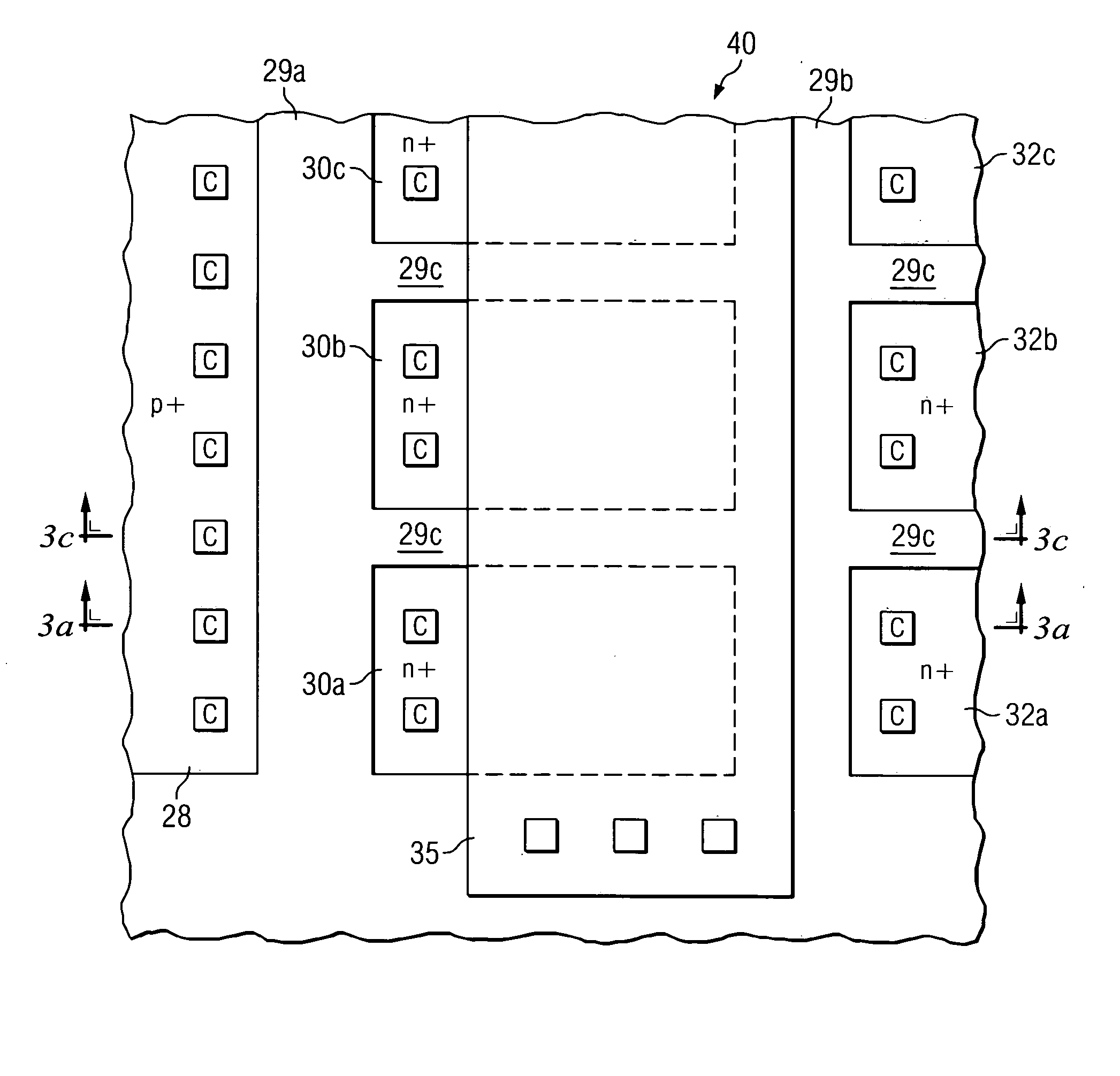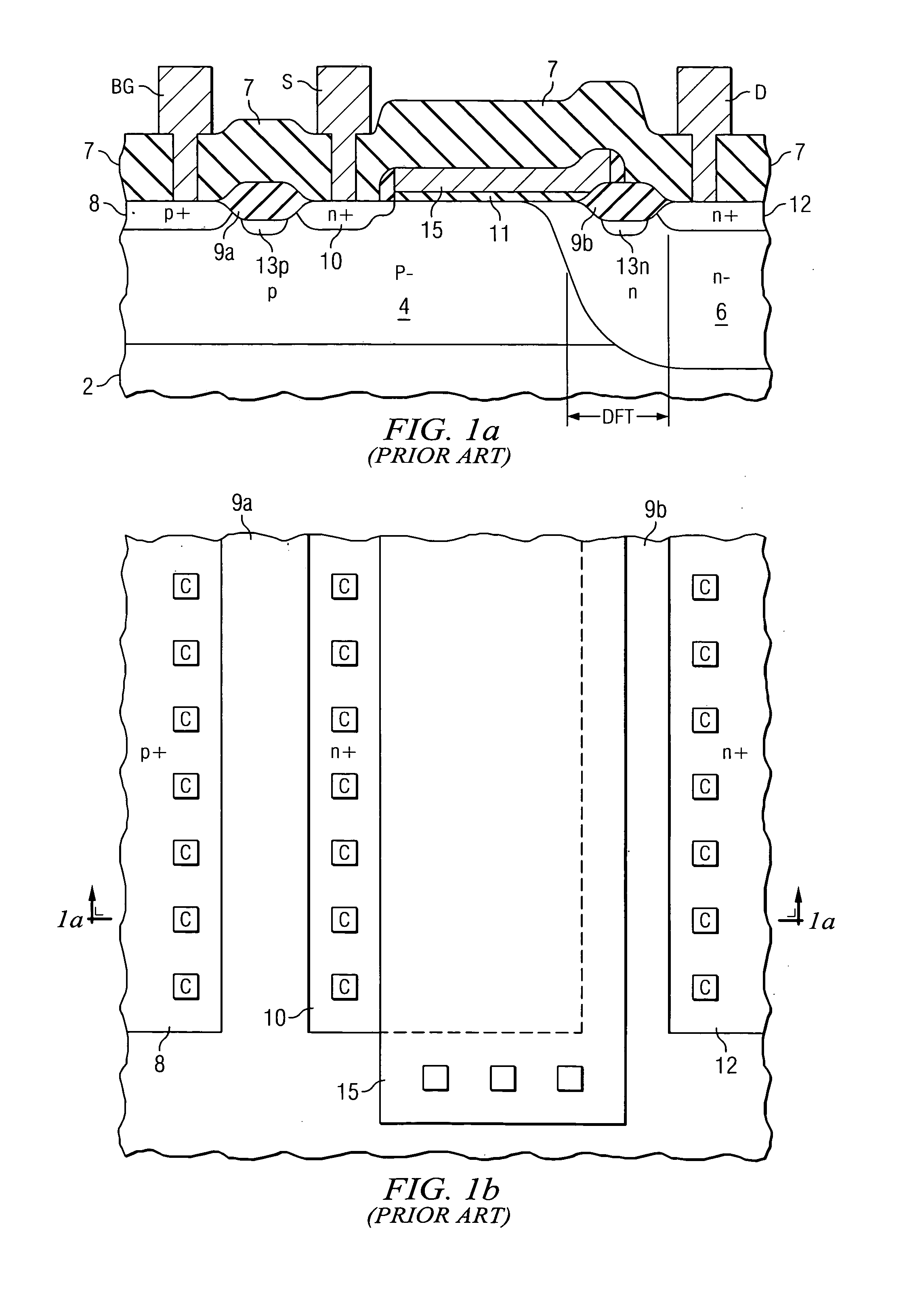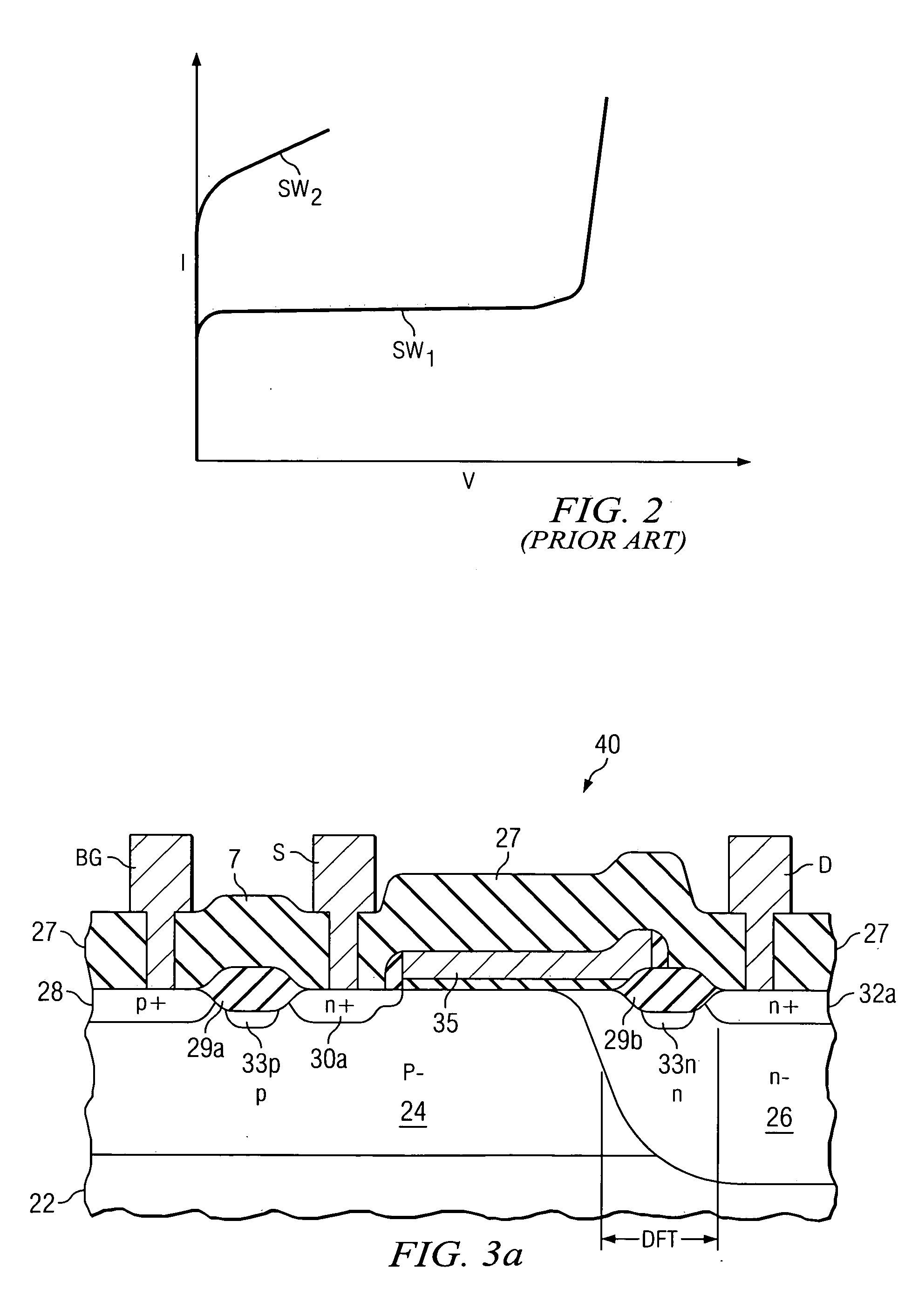Drain extended MOS transistor with improved breakdown robustness
a technology of extended mos and transistors, applied in the field of semiconductor integrated circuit construction, can solve the problems of easy damage, shallow junctions, and difficult integration of many system functions into fewer integrated circuits for certain types of electronic systems
- Summary
- Abstract
- Description
- Claims
- Application Information
AI Technical Summary
Benefits of technology
Problems solved by technology
Method used
Image
Examples
Embodiment Construction
[0031] The present invention will be described in connection with its preferred embodiment, namely as implemented into an n-channel drain-extended metal-oxide-semiconductor (DEMOS, or drain-extended MOS) transistor formed into a bulk silicon substrate. This exemplary embodiment is believed to especially benefit from this invention, as will its complementary p-channel DEMOS devices. However, it is also contemplated that this invention will have benefit in other implementations, including transistors formed into other substrate arrangements such as silicon-on-insulator, depletion mode field-effect transistors (FETs), junction FETs, and the like. Accordingly, it is to be understood that the following description is provided by way of example only, and is not intended to limit the true scope of this invention as claimed.
[0032] Referring now to FIGS. 3a through 3c, n-channel drain-extended MOS transistor 40 constructed according to the preferred embodiment of the invention will now be d...
PUM
 Login to View More
Login to View More Abstract
Description
Claims
Application Information
 Login to View More
Login to View More - R&D
- Intellectual Property
- Life Sciences
- Materials
- Tech Scout
- Unparalleled Data Quality
- Higher Quality Content
- 60% Fewer Hallucinations
Browse by: Latest US Patents, China's latest patents, Technical Efficacy Thesaurus, Application Domain, Technology Topic, Popular Technical Reports.
© 2025 PatSnap. All rights reserved.Legal|Privacy policy|Modern Slavery Act Transparency Statement|Sitemap|About US| Contact US: help@patsnap.com



